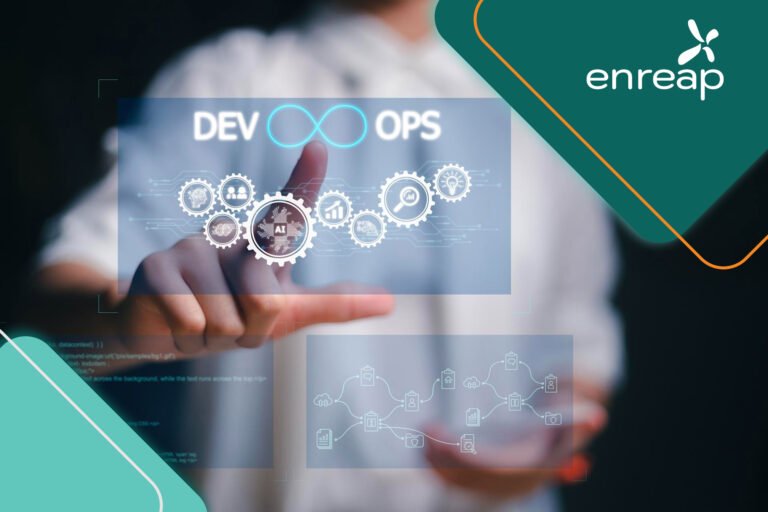Organizations in the software development industry have been leveraging the benefits of DevOps to accelerate quality, reduce costs, and improve time-to-market. At the same time, they have also been capitalizing on Cloud to enable better availability, security, and scalability of the products they build. But the realm of DevOps and Cloud largely remains untapped because not many have used the two concepts together to drive two-fold benefits. And those who do realize the benefits are struggling to uncover the real truth behind common myths about DevOps on Cloud.
The Growing Popularity of Cloud DevOps
Cloud and DevOps both are experiencing widespread growth and adoption across the globe.
While the cloud computing market is expected to be worth $832.1 billion by 2025, the global DevOps market size is expected to reach $12.85 billion by 2025. Although almost every organization today is embracing both these concepts to drive better development efficiencies, when used together, they offer the ability to automate provisioning and modify platform configurations on demand to speed up deployment.
Together, DevOps and Cloud can deliver unmatched benefits across:
- Automation of development, testing, or integration processes to reduce human error, improve security and governance as well as quality and speed DevOps delivery
- Scalability of products as processes via better and faster development and testing outcomes, as well as provisioning of resources – depending on the user or business demand
- Continuous monitoring using modern monitoring tools that help in ensuring the health, performance, and reliability of applications and infrastructures as they move from development phase to production phase
- Seamless capacity planning via real-time monitoring of usage patterns, so teams can get a better idea of the resources that are currently available and resources that would be needed to meet demand – without impacting performance or functionality
- Faster time-to-market by delivering better visibility and control into DevOps processes, so opportunities can be maximized and challenges can be minimized
6 Common Myths (And Real Truths) about DevOps and Cloud
Despite the benefits of using DevOps on Cloud, a majority of enterprises are still keeping their distance from embracing DevOps and Cloud together – mostly because of the misinformation or myths that surround them.
Here are 6 common myths doing the round and the real truths behind each one of them:
- Operating Cloud and DevOps together is difficult: One of the biggest myths about DevOps on Cloud is that operating them together is difficult. However, this is far from the truth. It is certainly possible to leverage continuous integration, monitoring, and testing tools in combination with the dynamic infrastructure provisioning capabilities of the Cloud. What organizations need to understand is that all of these tools might not be best of breed or might not meet their requirements in exact ways. But in that case, they can use DevOps toolsets that are a combination of on-premises and Cloud-based tools to meet specific business needs and goals.
- Cloud DevOps is just about embracing a bunch of automation tools: Contrary to popular belief, Cloud DevOps is not just about ticking tools off a checklist. It requires organizations to rethink how they develop, deploy, and monitor their applications and leverage Cloud features to get access to resources on-demand. In addition to using modern tools, teams also have to focus on enabling continuous everything while adopting Cloud-based practices across the lifecycle of their projects. Although tools like JIRA and Docker can greatly ease the implementation of DevOps practices, teams must also learn how to optimize them and evolve their DevOps methodologies in relation to the Cloud.
- Embracing Cloud DevOps is a sure-shot way of cutting costs: Organizations that look to embrace DevOps on Cloud just to cut costs need to take a step back and re-examine their expectations and goals. Although it is worth mentioning that using Cloud can help in bringing CapEx to zero while simultaneously optimizing OpEx, organizations will still be required to be on their toes to maintain these savings. The ease of Cloud resource provisioning is often a major cause of massive Cloud bills. Therefore, organizations must drive efforts in constantly monitoring usage and costs and shut down or reallocate resources to enable better cost efficiencies.
- Cloud DevOps doesn’t need continuous monitoring: Irrespective of whether you use DevOps on-premises or in the Cloud, the need for continuous monitoring does not change. To ensure teams are working in the right direction, security and compliance challenges are regularly addressed, and the project has all resources needed for successful completion, organizations need to drive efforts in continuously monitoring the progress, status, and risk posture and make necessary amends to improve delivery outcomes.
- I don’t need to have Cloud expertise for success: Organizations also tend to assume that for Cloud DevOps success, they don’t need to have Cloud expertise. But this is not true. Given how complex the various aspects of Cloud can get, organizations must have sufficient experience and expertise in cloud computing to enable the best results: right from what Cloud resources to provision, how to provision them, how to monitor them, or how to pay for them. If they lack that experience in-house, they must consider partnering with experts who bring the level of knowledge and know-how needed for long-term Cloud DevOps success.
- Security and compliance are difficult to achieve with Cloud DevOps: Another common (mis)belief that organizations have with DevOps and Cloud is regarding security. Certainly, if security issues will crop up if applications are built and deployed without proper security testing processes and tools. What DevOps and Cloud allow is to build security into the applications themselves, helping enhance the security posture.
In today’s competitive business era, Cloud and DevOps are like two peas in a pod! Although you can use both in isolation to meet different business objectives, when used together, they can turbocharge your development efforts and allow you to meet all your goals with greater ease.




